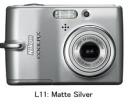Archive for the ‘Tips & Tricks’ Category
Mac OSX – “Open With” Menu Tips
When you double-click a file it will open in the default application, which is fine for most situations. Often, each file format corresponds to a single application. Word documents open in Microsoft Word, MP3s open in iTunes and movies open in Quicktime Player. But there are times when you might want a file to open in a different application. For example, you might want a image to open in Photoshop rather than Preview, or a Word document in TextEdit instead of Microsoft Word. In this situation, you have a few options.
Firstly, if the application is in the Dock, you can simply drag the file onto its icon in the Dock. Alternatively you can open up the application first, and choose “Open” form the File Menu. A third method is to use the “Open With” menu. You will find this by right-clicking (Control-clicking) on the file and looking near the top of the contextual menu. Within the Open With submenu you will find every application that can open the file, as well as an “Other” option.

When you use the Open With menu, it is a “this time only” thing. Next time you double-click on the file, it will open with the default application again. To change the default application, bring up the menu as before, but hold down the Option key before choosing the application. The menu should change to “Always Open With”.
When you use the Always Open With menu, it is a “this file only” thing. To apply a new default application to all files of that format, you can use the Get Info window located in the File Menu. In the Open With section, set the new application and click the “Change All” button.
To reset all of your files to open with the original default application, you need to delete a certain file. Go to your user folder, and navigate into the Library folder then into the Preferences folder. Find the com.apple.LaunchServices.plist file, and drag it to the Trash. Alternatively, drag it to the Desktop if you think you might change your mind and want to put it back later.
Over time, you may find that the Open With menu gets cluttered with duplicates, older versions or applications you thought you deleted long ago. To get rid of these, you need to use Terminal. Open up Terminal (from Applications/Utilities) and paste the following line:
/System/Library/Frameworks/ApplicationServices.framework/Frameworks/LaunchServices.framework/Support/lsregister -kill -r -domain local -domain system -domain user
Press return and your Open With menu should have been cleaned up to only include the most current applications.
Originally from – http://www.macosxtips.co.uk/
Setup A Wireless Network Without A Router
Wireless networks are helpful because they let you use your computer and connect to the Internet anywhere in your home or office. However, most wireless networks use a wireless router, which can be expensive. If you have more than one computer, you can set up a wireless network without buying a wireless router and save yourself some money.
Setup A Wireless Network Without A Router
Source – http://www.microsoft.com
iChat to MSN Through Jabber
The latest version of the Mac OS X known as Tiger brings Jabber support to iChat which indirectly supports other messaging protocols like MSN, ICQ, AIM and IRC.
Go To – http://allforces.com/2005/05/06/ichat-to-msn-through-jabber/
Few Things Which You Need To Know In Digital Cameras
Resolution is less important than you think
There is a popular misconception that more megapixels lead to better pictures. This is not the case. Sure, higher resolution gives you the ability to crop more aggressively or print large pictures, but only a fraction of digital photographers will benefit from this ability. If you’re a casual shooter who won’t be printing pictures larger than 8×10″ or doing extensive computer editing, then a camera with 3- or 4-megapixel resolution will be sufficient.
More advanced photographers will likely appreciate the flexibility of higher resolution, but a 5+ megapixel camera is by no means necessary to create stunning pictures. Choose a camera you can understand and afford, and don’t be fooled by glitzy high-resolution specs.
Zoom is more important than you think
Whether you’re shooting distant wildlife or close-up portraits, you can never have too much zoom. The majority of digital cameras have 3-, or 4x optical zoom, but you will never regret choosing a model with more telephoto power.
Fortunately the extended zoom camera category is growing rapidly, and there is a great selection of models with 8-, 10-, or even 12x optical zoom. For the ultimate in zoom control and quality, look for an extended-zoom camera with image stabilization, which will ensure that shots taken at full telephoto will be tack-sharp, even without a tripod.
Travelers should use cameras with AA Batteries
Digital cameras come in two varieties: those that use AA-size batteries and those that are powered by proprietary lithium-ion batteries. If you are a traveler, particularly someone who enjoys remote or rustic locations, choose a camera with AA batteries.
When a camera that uses proprietary batteries runs out of power, you have no choice but to plug the battery into a power outlet to recharge it. This requires an available outlet, a battery charger, and, if you’re in a foreign country, a power converter. If access to an outlet is ever in doubt, or if you don’t want the hassle of carrying cords and chargers, then the limitations of this system are obvious.
When a camera that uses AA-size batteries runs out of power on a trip, you can simply throw out the old batteries and drop in a new set of high-performance AAs like the Energizer E2 Lithium line. Two or three sets of such batteries can usually take you through a 10-day trip. If you’re out of high-performance batteries, you also have the option of using standard alkaline batteries, which are available anywhere in the world, and make a cheap and convenient source of backup power (though they only offer a fraction of the life of high performance batteries).
Recent trips to Asia and Africa have borne this theory out—after my companions’ cameras had been sidelined by dead batteries, I was still happily shooting away with my AA-powered Canon PowerShot.
Small cameras get shots that big cameras don’t
Sure, that big, black SLR with the long lens may look fancy, but it won’t do you any good if you’re not carrying it. Never underestimate the importance of having a camera that is small enough to fit into your pocket—you’ll be amazed at the spontaneous pictures you’ll have the opportunity to take. While the photo quality produced by an ultra-compact does not equal that of a large SLR, the ability to whip it out and snap a shot while others are fumbling for their bulky cameras more than outweighs this drawback.
Digital cameras can and will break
Whether it’s due to accidental damage or simple wear and tear, digital cameras are not as durable as their film counterparts. Many photographers have film cameras that are ten or twenty years old—don’t expect this kind of longevity from your new digital toy. Some cameras suffer from design flaws (like black lines on the LCD screen of the Canon A70), while others fall victim to the kind of mechanical breakdowns that effect every kind of electronic gear.
Does this mean that you shouldn’t buy a digital camera? Absolutely not. A digital camera will so fundamentally change the way you think about photography that you will wonder how you ever got along without one. You must, however, be comfortable with the fact that one day your camera will cease to work.
For some, this knowledge may keep them from spending top dollar on a fancy camera; others simply accept it as the sole downside of working with digital. The most important thing is to do your homework before you buy—any fundamental design flaws will be quickly apparent in user reviews.
Don’t put all your pictures on one card
After returning from a trip to Asia, I eagerly inserted one of my memory cards into a card reader to download my new pictures. For still unexplained reasons (likely a static electricity discharge), a card that should have held over 200 pictures was suddenly rendered blank. Two weeks and $250 later (thanks to http://www.drivesavers.com), I had recovered about 90% of my pictures, but the rest were lost permanently.
The moral of the story? Like any other technology, flash memory is not flawless. It is very rare to lose images, but it does happen, and the fact that I had spread my pictures between 5 memory cards protected me from the possibility of losing two weeks’ worth of irreplaceable vacation memories. Given the choice between choosing a single 1GB memory card, or four 256MB cards, I will always choose multiple cards.
Find & use a simple photo editing program
Most digital photographers will never take the time to master expensive and powerful photo editing programs like Adobe Photoshop or Jasc Paint Shop Pro—these programs are too complex and time-consuming for all but the most dedicated photographers. Fortunately there are a variety of easy-to-use editing programs that even novice photographers can use to edit, improve, and organize their digital photos.
My favorite program is Picasa, and it is absolutely free at http://www.picasa.com. With Picasa you can perform all the basic editing tasks like sharpening, contrast correction, cropping, and straightening—most with just the touch of a button. Spend a few minutes on your best photographs and you will be amazed at the results. Picasa also make it incredibly easy to organize your best shots so you don’t have to sift through hundreds of unwanted pictures to find your prizewinners.
Print and display your pictures
Far too many people take great digital images, only to have them languish in obscurity on their hard drive, never to be enjoyed by others. Don’t let this happen to you.Online printing companies like Ofoto can turn your digital images into high-quality prints of any size. Using Ofoto is easy—you simply download a free tool to your desktop and use it to load your pictures onto the Ofoto website. From there you can order prints of every size as well as photo mouse pads, calendars, t-shirts and other gifts. You can also send a link to friends so that they can view your pictures online and order their own copies.
If you want to see more of your own pictures, nothing beats using them as a screen saver on your computer. Simply right-click on your desktop, choose Properties/Screen Saver/Settings, and you can direct your computer to the pictures you wish to use. Set the screensaver to change images every 10 seconds and you’ll have an instant slide show every time your computer is idle.
How To Install Linux Applications In OS X
A tutorial which will help you in installing Linux Programs in OS X. Click on the link below – How to install Linux Apps in OS X
 Comments (20)
Comments (20)







